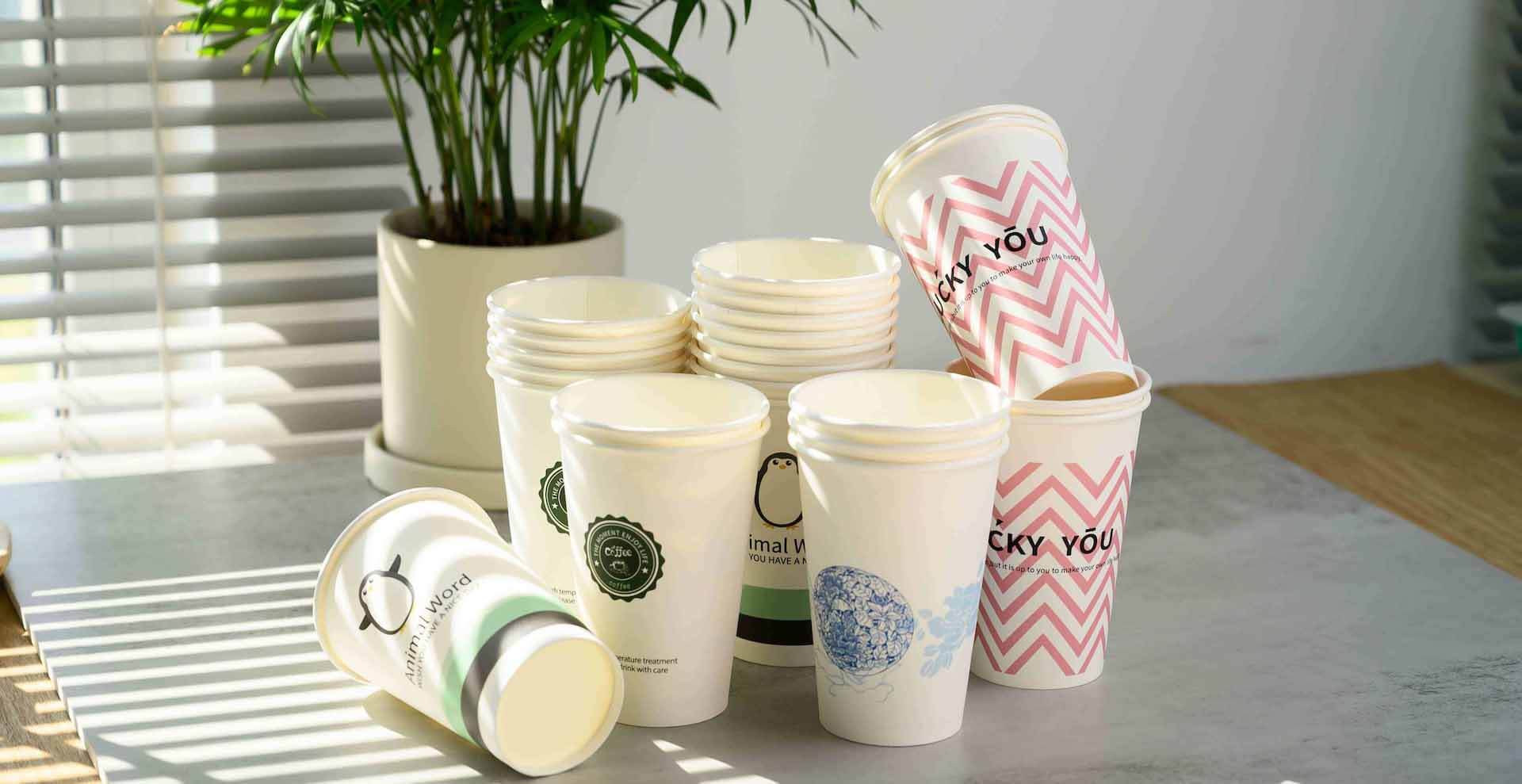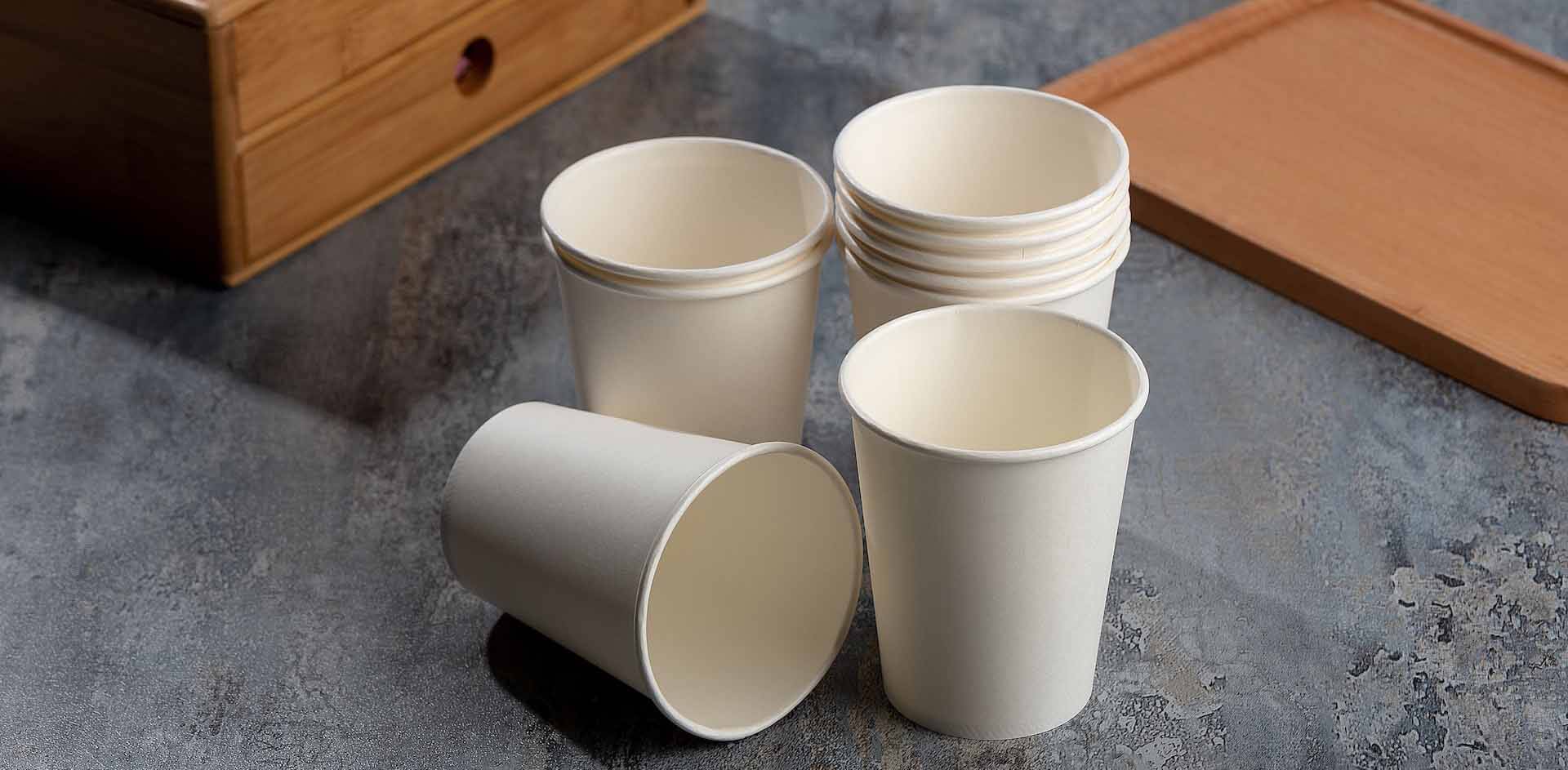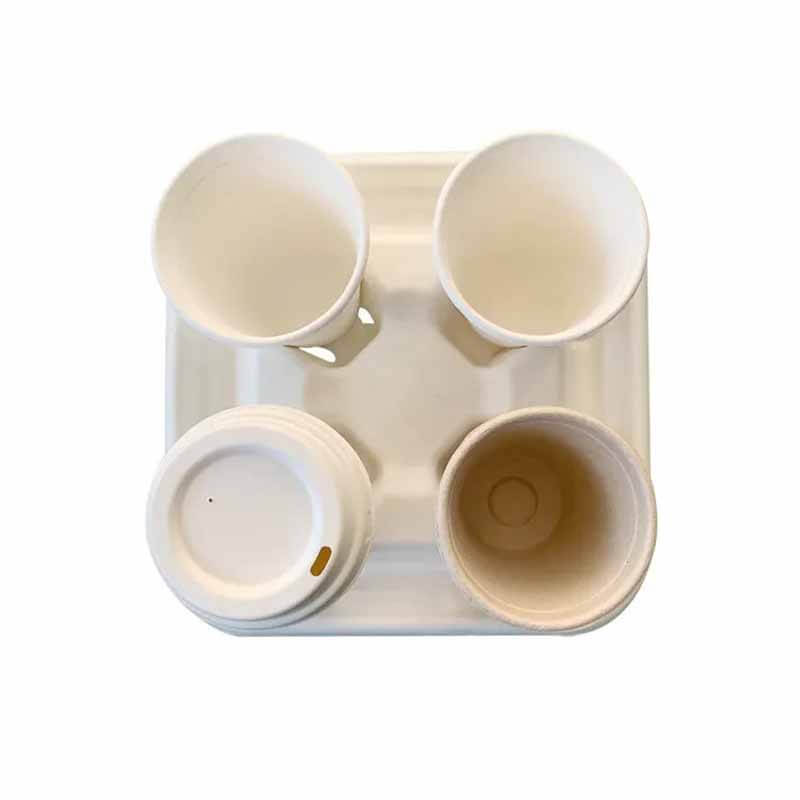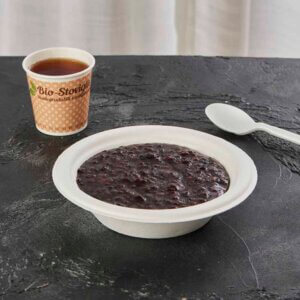- What Are Disposable Cups?
- Who Invented the Disposable Cup?
- Types of Disposable Cups
- Customization Options for Disposable Cups
- The Advantages and Disadvantages of Disposable Cups
- What Material is Best for Disposable Cups?
- Optimal Sizes of Disposable Cups for Different Applications
- Environment Consideration for Disposable Cups
- FAQs about Disposable Cups

Modern society has an increasing demand for disposable cups because they bring very convenient life to this society. Get up in the morning and brew yourself a cup of coffee, you don’t have to wash the cup. The finished cup can be thrown into the trash can, and you can pick up your briefcase and go to work. When you go out for lunch and order yourself an after-dinner drink, but it’s almost time to go to work, you don’t have to worry. You can put your drink in a disposable cup and take your dessert with you to work. Today, I will give you a comprehensive understanding of disposable cups.
What Are Disposable Cups?
Disposable cups are single use drinking containers that can hold beverages and liquids. They can be made in different materials, such as paper, plastic, foam, bagasse, etc. with different capacities.
Who Invented the Disposable Cup?
Lawrence Luellen invented the first disposable paper cup in 1907. The original intention of inventing disposable paper cups was that he was selling automatic water dispensers. Using reusable cups would cause the spread of bacteria and germs, and was not conducive to the sale of water dispensers. Here you can see more about paper cup.
Types of Disposable Cups
Disposable cups can be produced in different materials according to personal needs or market demands. Each of them has its own features, let’s take a look at the main types of disposable cups on the market.
Disposable Paper Cups
Disposable paper cups are mainly made of paper, but not just paper. The cup is also coated with plastic or wax to prevent hot or cold drinks from being absorbed, leaking or the cup disintegrating.
What Are The Common Specifications for Disposable Paper Cups?
Disposable paper cups are designed with a variety of specifications to meet different needs. When we discuss the size of disposable paper cups, we usually use ounces as the unit of measurement. But under the Imperial system and the US customary system, they are slightly different. Under the Imperial system, 1oz is 28.41ml, under the US customary system, 1oz is 29.57ml. Take the imperial system as an example, let’s see what common specifications of paper cups are available on the market.
3 ounce = 85ml
7 ounce = 199ml
8 ounce = 227ml
9 ounce = 256ml
12 ounce = 341ml
14 ounce = 398ml
16 ounce = 455ml
20 ounce = 568ml
Disposable Plastic Cups
Disposable plastic cups are a general term. If you want to subdivide them, there are many types of plastics, such as polystyrene plastic cups, polypropylene plastic cups, polyethylene plastic cups, polylactic acid plastic cups, etc. Based on different factors such as cost, heat resistance, environmental protection requirements, etc., they are used in different application scenarios.
What Are the Common Specifications for Disposable Plastic Cups?
Calculations based on imperial systems:
3.5 ounce = 100ml
5 ounce = 150ml
6 ounce = 180ml
7 ounce = 200ml
9 ounce = 250ml
10.5 ounce = 300ml
18 ounce = 500ml
Disposable Foam Cups
Disposable foam cups are made from polystyrene, which is a petroleum and natural gas-based plastic. This material has been widely used in the past because of its low cost and excellent thermal insulation properties.
What Are the Common Specifications for Disposable Foam Cups?
Calculations based on imperial systems:
4 ounce = 114ml
6 ounce = 170ml
8 ounce = 227ml
10 ounce = 284ml
12 ounce = 341ml
14 ounce = 398ml
16 ounce = 455ml
20 ounce = 568ml
24 ounce = 682ml
32 ounce = 909ml
Compostable Cups
When we mention compostable cups, people always think of PLA cups, but PLA cup takes 100-1000 years to biodegradable depending on different circumstances. This is not really good for the environment, we need to find a more sustainable solution – sugarcane cups, which are made of bagasse, a natural material that is compostable and biodegradable.
What Are the Common Specifications for Compostable Cups?
Calculations based on imperial systems:
2 ounce = 57ml
4 ounce = 114ml
7 ounce = 199m;
8 ounce = 227ml
12 ounce = 341ml
16 ounce = 455ml

Customization Options for Disposable Cups
No matter the material of disposable cups, they offer numerous customization options, including:
- Colors and Patterns: You can custom the exterior color and patterns of the cup.
- Sizes: For any material of disposable cups, not only the size above, you can custom any cup size you want with the manufacturer.
- Brand and Logo: You can ask the disposable cup manufacturer to print or engrave.
The Advantages and Disadvantages of Disposable Cups
Getting to know the pros and cons of different materials of disposable cups will be beneficial for you to choose suitable drinking cups.
Disposable Paper Cups
Pros:
- Suitable for hot and cold drinks.
- Lightweight and easy to carry.
- More environmentally friendly than traditional plastic cups
- Can be customized into various colors and sizes.
- Low cost.
Cons:
- Only for single-use
- Not biodegradable, due to plastic or wax coating
Disposable Plastic Cups
Pros:
- Lightweight, not easy to break.
- Convenient and easy to carry.
- Can be customized into various sizes.
- Low cost.
- Part of them can be recycled (depending on the cup material).
Cons:
- Non-degradable.
- Can not withstand high temperatures.
- Plastic may cause harm to the human body.
- Plastics are harmful to the environment.
- Plastics are harmful to animals.
Disposable Foam Cups
Pros:
- Lightweight.
- Cheap.
- Good insulation performance.
- Can be customized into various sizes and logo printing.
Cons:
- Harmful to the environment.
- Non-degradable.
Compostable Cups (Bagasse Cups)
Pros:
- Biodegradable and compostable.
- Cheap.
- Good for the environment.
- Renewable resources
- Can be used in refrigerators and microwaves
- Can be customized into various sizes with logo printing.
- Sturdy, waterproof & oilproof, with no chemical coating.
Cons:
- Limited by sugarcane production.

What Material is Best for Disposable Cups?
After comparing several common disposable cups on the market, we can clearly see that bagasse cups are the best disposable cups. It not only meets all the requirements for people to choose disposable cups, such as lightweight, easy to carry, strong enough, no odor, no chemical coating, and hygienic. It also meets the environmental requirements of this era, such as: degradable, compostable, almost no restrictions on raw materials, suitable for hot and cold drinks, can be stored in refrigerators and microwaves, and is highly customizable.
No matter whether you want to wholesale sugarcane cups or use them in your hotel, restaurant, beverage shop, or cafeteria. Eco March can be your best supplier of compostable cups.
Optimal Sizes of Disposable Cups for Different Applications
You may the one who likes to enjoy different kinds of beverages in daily life, do you know what’s the size of the cup is?
Coffee Cups with Lids
This actually depends on different coffee shop services, the coffee shop can customize the cup size based on the coffee you provide. Common coffee cups with lids capacities on the market:
- 7oz cups
- 8oz cups
- 12oz cups
- 16oz cups
Customized coffee cups in bulk here!
Milk Tea Cups
Nowadays, people tend to use sugarcane pulp cups as a sustainable alternative for milk tea cups, replacing paper and plastic cups, due to the features of biodegradable and compostable. So, what are the milk tea cup sizes?
- 12oz milk tea cups
- 16oz milk tea cups
- 24oz milk tea cups
Of course, you can customize the milk tea cup sizes from Eco March!
Souffle Cups
More and more dessert shops and bakeries are beginning to use bagasse cups instead of plastic cups as souffle cups because this type of cup is very environmentally friendly. What are the widely used sizes of souffle cups?
- 2 oz souffle cups
- 4 oz souffle cups
Condiment Cups
More and more restaurants and fast food outlets are using bagasse portion cups as condiment cups to instead the plastic portion cups. What are the widely used sizes of condiment cups?
- 2 oz condiment cups
- 4 oz condiment cups
The disposable bagasse cups not only serve for the above application but also can be used as tea cups, milkshake cup, ice cream cup, sundae cup. Contact Eco March to customize bagasse cup size to fit your specific need.
Environment Consideration for Disposable Cups
Disposable cups provide convenience to us, but there will also be many problems. Let us take a look at them:
Waste Generation: Disposable cups are single-use items and once discarded, they either get buried in the ground or end up flowing into the ocean. Consider choosing a material that is biodegradable and compostable. If using plastic material too much, white pollution on the earth will be very serious.
Resource Depletion: Continuous cutting down of trees to make disposable paper cups also causes resource depletion. Trees are indeed renewable, but trees exist to purify the air and balance the ecology. Continuous cutting down of trees is damaging to the environment to a certain extent.
Degradability: Some research said, the PLA plastic can be biodegradable and compostable, but they need 100-1000 years to degrade in the natural environment. This is also a big burden to the earth.
Therefore, when we choose disposable paper cups to bring convenience to our lives, we must also consider whether our choice is beneficial to the environment.
FAQs about Disposable Cups
Q: How many disposable cups do I need for wedding?
A: This depends on the cup size you ordered. Generally, we suggest you to prepare 3-4 disposable cups for every guest.
Q: Where to buy disposable coffee cups with lids?
A: If you want to wholesale coffee cups, Eco March produces the bagasse cups and provides custom service for you.
Q: Are disposable coffee cups microwave-safe?
A: It depends on the material of the cup and how sturdy it is. For example, if you are going to microwave a used paper cup with high humidity, this is not recommended. The best answer to the question is: you should refer to the back of the cup in your hand for the ‘microwave safe’ label.
Q: Are disposable drink cups recyclable?
A: This depends on 1. Disposable drink cup material. 2. If your local department has a recycling solution.
If you want to custom disposable cups with eco-friendly features, Eco March will be your best partner to build a positive image in front of your customers.
John Q
John Q is Eco March’s Product Manager. With 5 years of prior experience in the food industry after graduating from university, he has been an integral part of Eco March. He excels in creating and developing eco-friendly food packaging products with a keen focus on enhancing the consumer experience.
Latest Products
Contact Us
Phone: +86 1358 4476 870
WhatsApp: +86 1358 4476 870
Email: info@ecomarch.com
Address: No.1179, TangShi Road, YangShe Town, ZhangJiaGang City, Jiangsu Province, China



